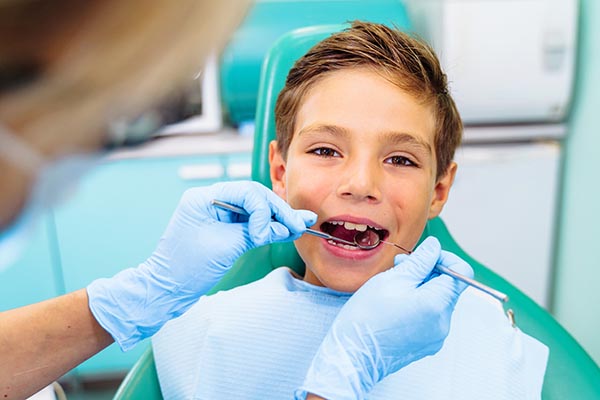 The American Association of Orthodontists recommends bringing your child to an orthodontist for a bite evaluation before they reach seven. Early detection of issues with the alignment of a child’s teeth or jaw makes it easier to correct them. The child’s jaw and facial structures are still developing at this point, making it easier to manipulate them with orthodontic appliances.
The American Association of Orthodontists recommends bringing your child to an orthodontist for a bite evaluation before they reach seven. Early detection of issues with the alignment of a child’s teeth or jaw makes it easier to correct them. The child’s jaw and facial structures are still developing at this point, making it easier to manipulate them with orthodontic appliances.
Frequently asked questions about how an orthodontist deals with children with bite issues
Let us take a look at the answers to some of the questions you might have about the importance of getting your child to an orthodontist early on:
1. When is the ideal age to bring the child in for an evaluation?
Children should have gone in for their first orthodontic evaluation by the time they reach age seven. At this point, their bite should be developed enough to notice any abnormalities. The severity of any issues detected often determines if treatment proceeds immediately. In some cases, the orthodontist might opt to wait until the child reaches their teenage years before starting treatments.
2. What are the commonly recommended treatments for children?
The type of orthodontic issues the child is dealing with and their severity often determines how an orthodontist addresses them. One of the most common orthodontic issues children develop is overcrowding caused by the premature loss of baby teeth. Crowding can also be caused by the child’s jaw not being wide enough for all their teeth.
Appliances like space maintainers can be used to preserve the space left by prematurely lost baby teeth, preventing alignment issues that could be caused by it. Devices like expanders can be used to push the child’s palate outward, creating more space on their jaw for their teeth.
Braces might be the most commonly used orthodontic device for children. Clear aligners can be used to treat many of the issues addressed with braces, but children often aren’t responsible enough to keep up with them until they reach their teenage years.
3. How long do orthodontic treatments last?
Most orthodontic issues can be fixed within 12 to 36 months. The more severe the child’s orthodontic issues are, the longer they will have to put up with an appliance. Straightening a child’s teeth is a process that must be done gradually and gently. Trying to shorten treatment times by putting excessive forces on a patient’s teeth can damage teeth roots.
4. Do orthodontic treatments typically involve using a retainer?
Yes, retainers ensure the patient’s teeth stay in their new position. Moving a person’s teeth to an improved alignment is only half of the equation. Their teeth still need time to bond with bone structures in their new position, so it becomes their permanent alignment. Most children only have to wear a retainer for a couple of years to complete their treatment.
We are here to help
Think your child has developed bite issues? Call or visit our Long Beach clinic to schedule an appointment with our orthodontist.
Request an appointment or call Paramount Dental Care & Specialty at 562-450-1261 for an appointment in our Long Beach office.
Related Posts
Your orthodontist can help straighten your teeth with the right treatment. Misaligned teeth can cause many dental issues. Correcting the issue can improve your dental health and self-esteem. Here are the common teeth straightening options to consider with the help of your orthodontist.These dental straightening appliances fit comfortably around the dental arches. Each custom aligner…
Wearing braces gives you a lot to think about leading up to and during the treatment. The process can be successful and produce the results you want. Whether you have crooked teeth, bite problems, or a crowded mouth, you can soon have a new smile. However, there are some important guidelines to follow during this…
Misaligned teeth often cause secondary oral health issues that affect a person’s daily life. This is why dentists need to monitor the growth and development of the teeth and jaws starting from when the patient is a young age. These periodic dental checks allow for early detection and intervention for orthodontic problems.While an orthodontist would…
